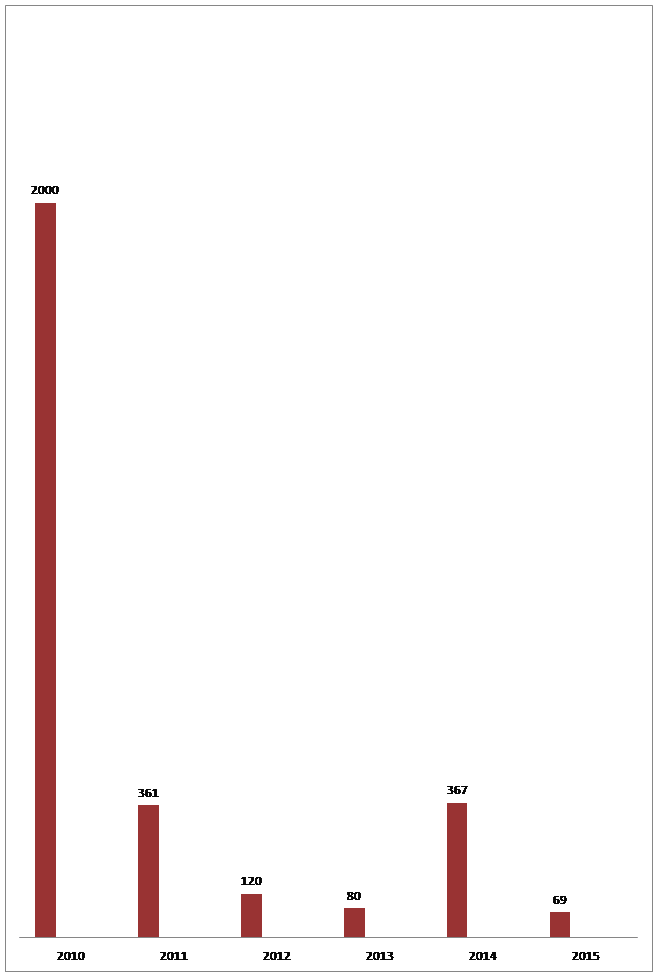Developing states are most affected by climatic change, with weak infrastructure and even weaker disaster mechanism. The disaster-affected are left to fend for themselves. The developing state of Pakistan remains one of the most vulnerable to adverse impacts of climate change like floods, droughts, climate, and weather variability. Every passing year, Pakistan is being hit by extreme weather patterns, which have killed thousands and wiped out millions of acres of prime farmland, harming the largely agrarian economy.
Since 2010’s devastating flood that affected millions and caused the death of 2,000 people, Pakistan has been reeling from the damage. Compounded by militancy and terrorism, the fury of the nature has brought Pakistanis immense misery. The number of individuals affected by the 2010 flooding exceeds the combined total of individuals affected by the 2004 Indian Ocean tsunami, the 2005 Kashmir earthquake, and the 2010 Haiti earthquake.
According to the latest reports from Pakistan’s National Disaster Management Authority (NDMA), so far, 69 people have died in current flooding, which has affected the provinces of Khyber Pakhtunkhwa, Punjab, Balochistan, Azad Jammu and Kashmir, Gilgit Baltistan, and Sindh. A total of 1,855 houses have been damaged and the floods have affected 294,844 people. A total of 7 deaths have occurred in Balochistan, 34 in Khyber Pakhtunkhwa, 8 in Punjab, 15 in Azad Jammu and Kashmir, and 5 in Gilgit Baltistan.
Despite floods having become a regular feature of the monsoon season, the government of Pakistan has not devised a disaster management policy to protect the people. There has been no upgrading of disaster management and weather prediction systems, which is a systemic failure of the state to plan for increased ferocity of floods.
With the advent of the current monsoon, a human catastrophe is already underway in the Chitral Valley, Khyber Pakhtunkhwa Province, as floods have swept away 40 link bridges and over 100 houses in the scenic valley. The flash floods, which started two days before Eidul Fitr, has devastated four villages in upper Chitral, inundating more than 300 homes and washing away vast tracts of agricultural land.
The government has declared the area to be calamity hit. Epidemics of gastroenteritis, diarrhoea, malaria, typhoid, dengue fever, scabies, and other diseases are feared in Chitral, where the administration is facing problems in even reaching the stranded population to provide treatment. The Khyber Pakhtunkhwa Health Department has asked for immediate assistance from UN agencies and donor organisations, so timely treatment can be provided to flood-stricken people in Chitral. According to a statement from the Health Department of KPK Province, the Department is waiting for the release of Rs. 14 million, pledged by the government, to provide healthcare facilities to the people on an immediate basis.
Just like the mountainous regions, the plains of Pakistan are suffering climate change and government neglect too. Lahore, the provincial capital of the Punjab Province, has turned into a swamp. The drainage and sewerage system in the city were choked after a few hours of rain, which speaks volumes about the priorities of the provincial government. If the basic infrastructure of the model city can unravel in a few hours of rainfall, one can imagine the state of things in the villages and countryside.
The Sindhi people are the next in line, likely to be victim to the floods and state neglect. The infrastructure in Karachi, the provincial capital of Sindh, is so poor that 117 feeders tripped the night following the first monsoon rain. The sewerage and drainage in the City are in dire condition, with many slum dwellings built over the nullahs (rainwater drainage). The whole City gets submerged in rainwater following mild rainfall.
Each year hundred of deaths are caused due to flooding. The following are the yearly statistics of death, since the 2010.
Number of deaths caused due to floods in Pakistan

In June, the heat wave in Karachi caused the death of more than 1,200 people. A slight weather variation can unravel the whole state apparatus and civic infrastructure. The vulnerabilities of the fragile system add to the troubles of the people suffering the wrath of the nature. State corruption and inefficiencies have further eroded the system causing the development budget to be wasted.
The government of Pakistan is planning to submit its plans for tackling climate change to the United Nations by September this year. The Ministry of Climate Change is finalizing the Intended Nationally Determined Contributions (INDC) draft. The INDC will mainly focus on mitigation and adaptation in six sectors including energy, transport, agriculture, forestry, industry, and waste. The plan, however, will serve little to help crises prone Pakistan. The State will need to develop infrastructure and work on the development of a disaster control mechanism to mitigate the damage caused by flooding. Building dams is another issue that has been neglected by the State as millions of gallons of water is wasted every year that can be used to irrigate rain-fed or arid lands, making them cultivable perennially.